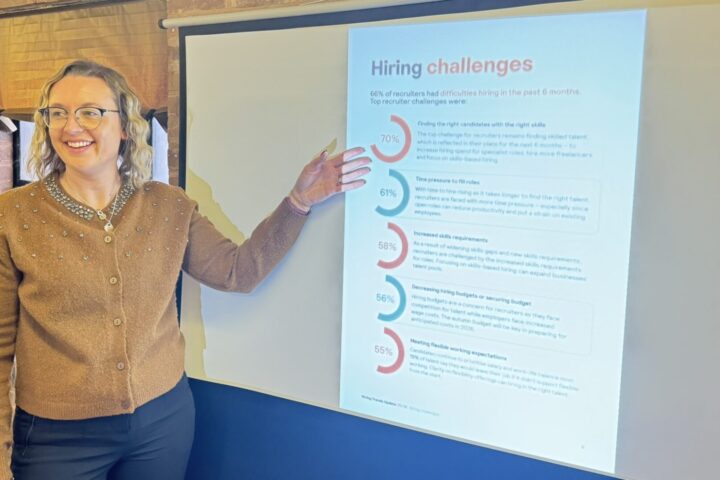Recruitment is the biggest headache for UK employers, with 29% calling it a major concern, research by HR and payroll software provider Ciphr found.
Retaining staff came close at 28%, while managing rising costs and budget shortfalls was a concern for 27%.
26% said meeting remote or hybrid working expectations would be difficult.
Ensuring good use of artificial intelligence (AI), meeting pay rise requests, and staying compliant with new employment laws each worried 25% of those surveyed.
Other concerns included providing regular training and development (23%), work-life balance (23%), an inclusive workplace (22%), and new benefits and rewards (22%).
Claire Hawes, chief people and operations officer at Ciphr, said: “It’s interesting to see how close the top five results were, with just one percentage point difference between each one.
“Although recruitment and retention continue to make headlines, Ciphr’s research highlights that HR leaders have many other, equally concerning, challenges to navigate – including AI, the impact of tighter budgets, complex regulatory changes, salary inflation, and continuing RTO/WFH demands.
“With such a range of challenges, it’s not always clear where to focus your efforts.”
Hawes added: “Yes, there’s the challenge of attracting the right talent. But that’s only ever half the battle – keeping people engaged, supporting them and enabling them to grow in their roles, while meeting their pay expectations, is often another challenge again.
“Employers must prioritise creating a compelling employee value proposition (EVP), which covers every aspect of the employee experience.
“Be led by your data – use feedback from existing employees, of all ages, and recent leavers to understand what needs to improve.”
She said: “Maybe it’s your benefits, maybe it’s clearer career pathways or maybe it’s more transparent communications. Make the changes you can and measure the impact.
“Operational resilience is contingent on how well organisations can balance rising costs with strategic investment in their people.
“Because the firms that put their people first will, I believe, be best placed to adapt and succeed in 2026.”
When asked about what employers should focus on for workers, nearly half (46%) of surveyed HR professionals picked providing a good range of employee benefits as the top priority.
This was just ahead of positive work culture and flexible working or life/work balance, both at 45%.
Good pay and regular training were next, each mentioned by 42%.
Fair treatment (41%), health and safety (40%), job security (40%), mental health support (39%), and overall employee experience (39%) also featured in the top 10.
Phil Curtis, managing director of Avantus Employee Benefits, part of the Ciphr Group, said: “Employers who embrace flexible benefits – giving people greater autonomy to choose the benefits they genuinely want – have seen staff retention rates improve.
“So, it’s no surprise that having a good range of employee benefits tops the list of priorities for UK employers looking to support their employees’ physical, mental and financial wellbeing.”
“A scattergun approach to reward strategy simply doesn’t cut it anymore.”
Curtis added: “Experience tells us that job seekers have become progressively more discerning, especially since the pandemic.
“They look beyond the headline salary when weighing up employment opportunities and they want to feel fairly rewarded for the value they bring to an organisation.
“Personalised benefits is an essential part of that.”
He said: “Investing in new benefits and rewards can be a challenge but doesn’t necessarily need huge budgets.
“Much can be done without additional cost, especially when salary sacrifice benefits are introduced.
“It’s also worth revisiting the value of certain core benefits, as it may be possible to unlock budget in this area with some creative thinking, targeting spend more effectively.”
He added: “Employees aren’t always totally aware of what benefits they may already have access to.
“Regular internal comms can help remind them about any benefits they may have missed, while dynamic total reward statements are a great way to illustrate the true value of their benefits packages.”
















